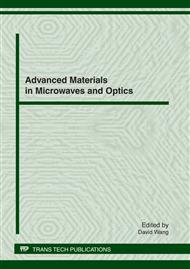p.416
p.422
p.428
p.437
p.444
p.450
p.458
p.465
p.471
A New Data Transformation Method for Cbers-02b Multi-Spectral Images
Abstract:
According to the detailed studies on the data of China-Brazil earth resources satellite-02B (CBERS-02B) and the LBV data transform method proposed by the previous researcher, a new LBV data transformation equations for CBERS-02B data was specially proposed. A transformation experiment on CBERS-02B data showed that the LBV transformed result images were more vivid, and the features of result images were more easily to be classified than the fault color composite images of original bands. In order to evaluate the performance of this proposed method, the maximum likelihood supervised classification method was used. The final classification results showed that the accuracy of the LBV transformed image is obviously better than that of the fault color composite images of original bands, which demonstrated that the proposed LBV transformation method for CBERS-02B has good potential for CBERS-02B data in the future applications.
Info:
Periodical:
Pages:
444-449
Citation:
Online since:
January 2012
Authors:
Price:
Сopyright:
© 2012 Trans Tech Publications Ltd. All Rights Reserved
Share:
Citation:


